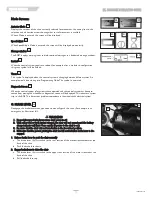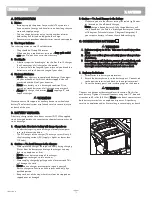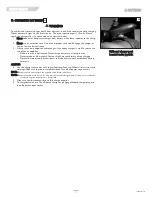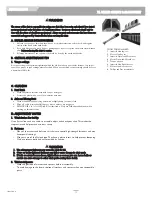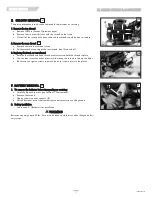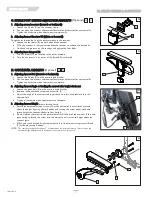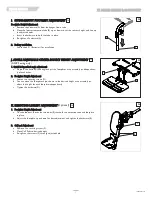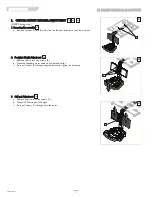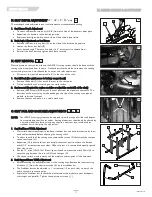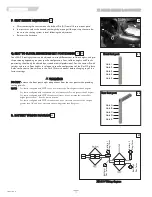
127899 Rev. A
26
Z I PP I E Z M- 3 1 0
45
A. INTRODUCTION
1. Notes–
•
Batteries supply the power for your chair. They contain a
finite amount of energy and have limits on how long they can
store and supply energy.
•
You can charge batteries only a certain number of times
before they will fail and no longer hold a charge.
•
For answers to questions about batteries, consult your supplier.
2. Use Proper Batteries:
Your chair operates on two 12 volt batteries.
• They should be Group 22 batteries.
• When you buy a replacement, insist on a deep cycle sealed
case type. Do not use a car or boat battery.
3. Breaking In:
•
A battery requires “breaking-in” for the first 6 to 12 charges.
It will not accept a full charge for this period.
•
It is best to limit the length of your trips until you break the
batteries in and you know the range of your chair.
4. Discharged Batteries:
•
Never allow a battery to completely discharge. If you oper-
ate your wheelchair until it has almost stopped, you will
greatly reduce the life of your batteries.
•
Never let a battery sit in a discharged condition. Give
unused or stored batteries a full charge once per month.
•
Always fully charge the batteries. Avoid “topping off” with
frequent charges.
WARNING
Never connect a life support or auxiliary device to a wheelchair
battery. The electrical system may fail, and result in severe injury to
or death of the user.
B. BATTERY CHARGER
A battery charger produces a direct current (DC). When applied
to a discharged battery, this reverses the chemical reaction that led
to its discharge.
1. Charge Rate. How fast a battery will charge depends on:
•
Its electrical capacity; state of charge; electrolyte tempera-
ture, and; internal condition.
•
The DC output of the charger. (The charge rate will vary if
the alternating current (AC) supply is higher or lower than
110 volts).
2. Caution — To Avoid Damage to the Charger:
•
Never place the charger on top of a battery during charging.
(Gases from the battery can damage the charger and may
lead to an explosion or fire).
•
Never place a battery on top of the charger.
•
Never expose charger to rain or snow.
•
Never unplug charger by pulling on the electrical cord. This
will damage the cord.
•
Never open a charger or attempt to repair it yourself.
Return charger to Sunrise or have repairs made only by a
qualified person.
•
Keep cord out of the way, where it will not be stepped on,
tripped over, or damaged.
3. Caution — To Avoid Damage to the Battery:
•
Make sure you use the correct setting for sealed (gel) batter-
ies (located on the off-board charger).
•
Never charge a frozen battery. A fully charged battery will
rarely freeze, but the fluid in a discharged battery can freeze
at 16 degrees Fahrenheit (minus 9 degrees Centigrade). If
you suspect a battery is frozen, thaw it before charging.
C. CONNECTING BATTERIES
WARNING
1. Batteries weigh up to 39 lbs. Take care to avoid injury when
lifting.
2. Always wear rubber gloves and safety glasses when you han-
dle batteries.
3
Before working with batteries, remove all metal effects, such
as necklaces, rings, watches, pins and other metal jewelry
that might contact battery terminal and cause a short.
1. Replacing the Batteries
1. Lift batteries into battery compartment.
2. Attach the battery harness to the battery post. Connect red
to the positive terminal and black to the negative terminal.
3. Cover the battery posts with insulating caps on the harness.
WARNING
Connect and disconnect battery cables with caution. Do this for
each battery. Tighten all terminal fasteners using two 1/2" box end
wrenches to 60 in-lbs (6.8 N.m). Never make direct contact across
both battery terminals, as an explosion may occur. A spark may
result in an explosion and/or fire resulting in severe injury or death.
45
X. BATTERIES














